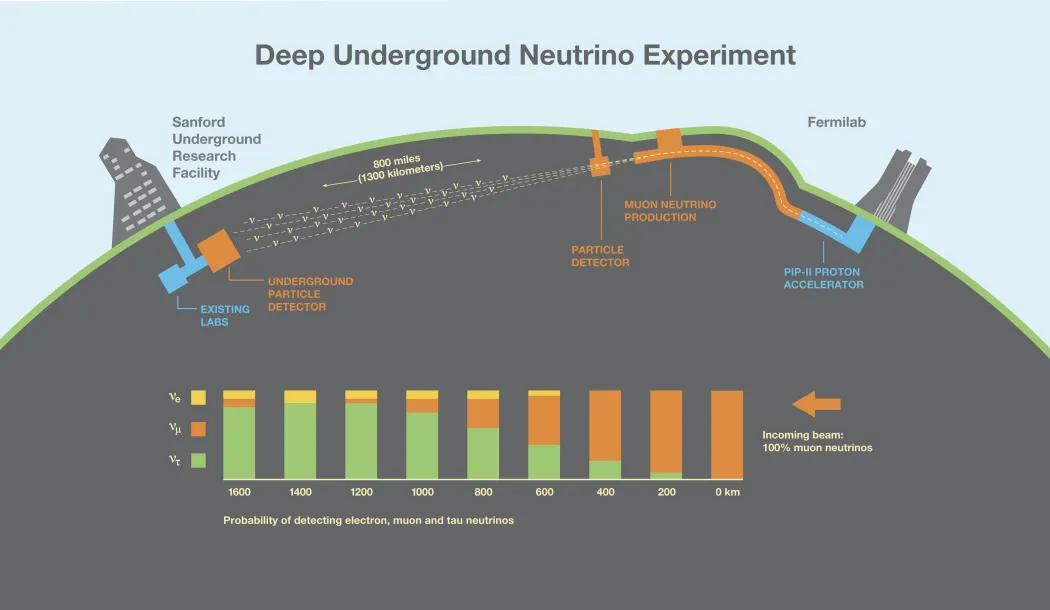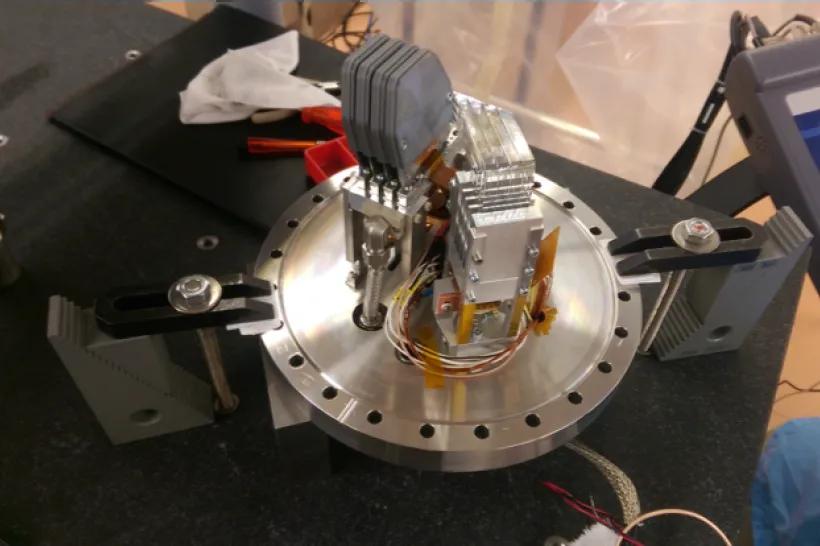The Deep Underground Neutrino Experiment (DUNE), a successor of the NOvA experiment, is being prepared in the Fermi national laboratory. The DUNE is a leading-edge, international experiment for neutrino science and proton decay studies. Discoveries over the past half-century have put neutrinos, the most abundant matter particles in the universe, in the spotlight for further research into several fundamental questions about the nature of matter and the evolution of the universe — questions that DUNE will seek to answer.
DUNE will consist of two neutrino detectors placed in the world’s most intense neutrino beam, the intensity of more than 1 MW. One detector will record particle interactions near the source of the beam, at the Fermi National Accelerator Laboratory in Batavia, Illinois. A second, much larger, detector will be installed more than a kilometer underground at the Sanford Underground Research Laboratory in Lead, South Dakota — 1,300 kilometers downstream of the source. These detectors will enable scientists to search for new subatomic phenomena and potentially transform our understanding of neutrinos and their role in the universe. Two prototype far detectors are at the European research center CERN. The first started taking data in 2018 and the second a year later. The Long-Baseline Neutrino Facility will provide the neutrino beamline and the infrastructure that will support the DUNE detectors. Groundbreaking for the LBNF excavation and construction at Sanford Lab occurred on 2017.
he Institute of Physics along the other two Czech institutions joined the DUNE experiment in Apr, 2017, expressing of interest in the LBNE (the DUNE predecessor) since 2014. This collaboration was officially confirmed by ‘Letter of Support for the Czech DUNE Consortium’ in May, 2017. After forming the so-called Far Detector consortia we take participation and responsibilities in the Photon Detection Consortium under the Photo Sensor working group, which we employ our experiences from using photo-sensors and related electronics in. Based on this, we rebuilt our photo-detector laboratory in the institute to be able measure sensors (SiPM varieties) under cryogenic temperatures used in the planned liquid Argonne DUNE (LArTPC) detectors. Measurements of the performance of photon detectors and quality assurance is currently crucial during the design and construction phase.
Our Czech team also participate in the ProtoDUNE project, DUNE detector prototype, which is a part of the CERN’s neutrino platform. Detector is based on TPC chambers placed in liquid argon and photo-detection system, which is supported also by our infrastructure. We participate in all project phases, i.e. installation, components testing, commissioning and data collection and analysis. Processed results verify the reliability of selected measurement technology and its ability for use at larger scales as for the DUNE experiment far detector. Conclusions of these studies will be reported in the main DUNE document, the Technical Design Report by the end of 2019 year.








